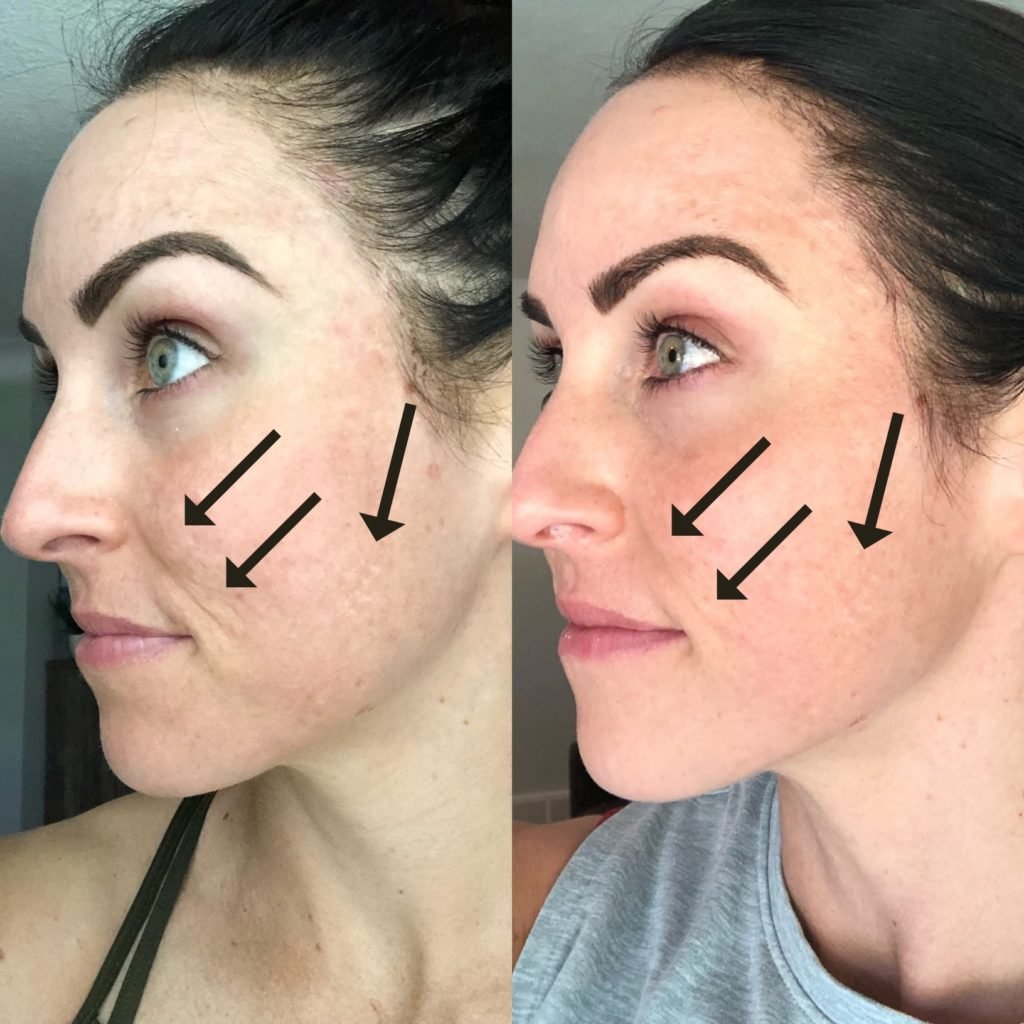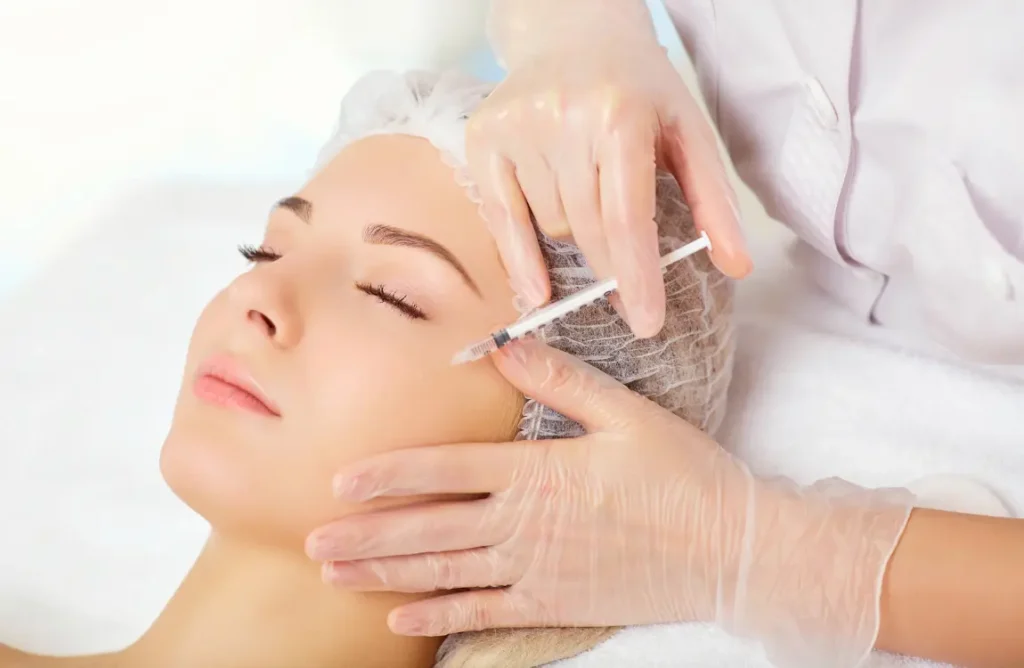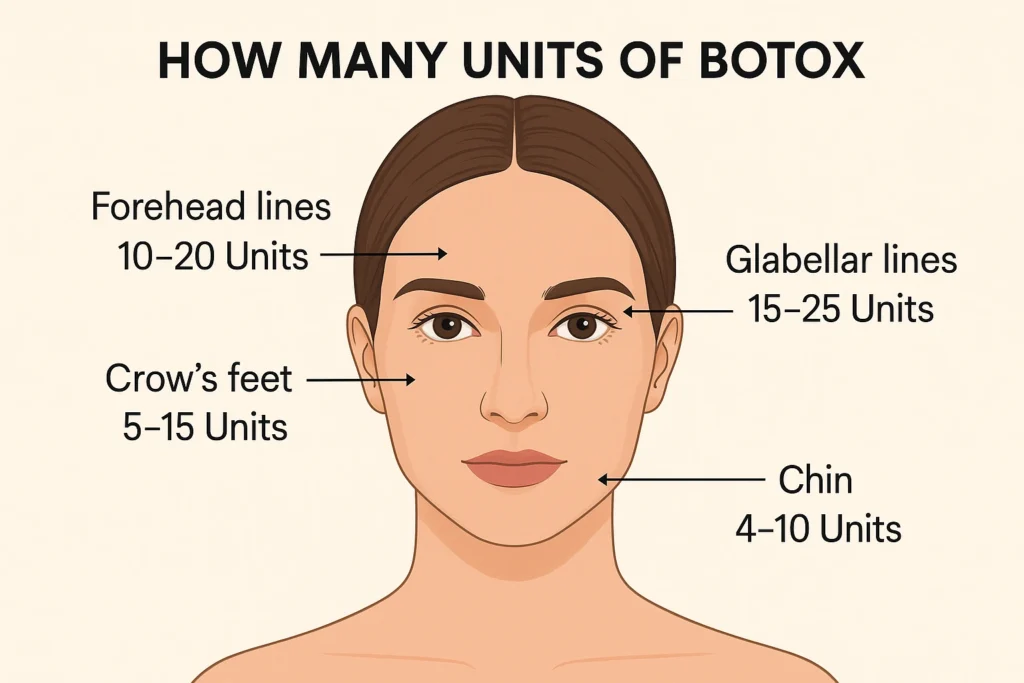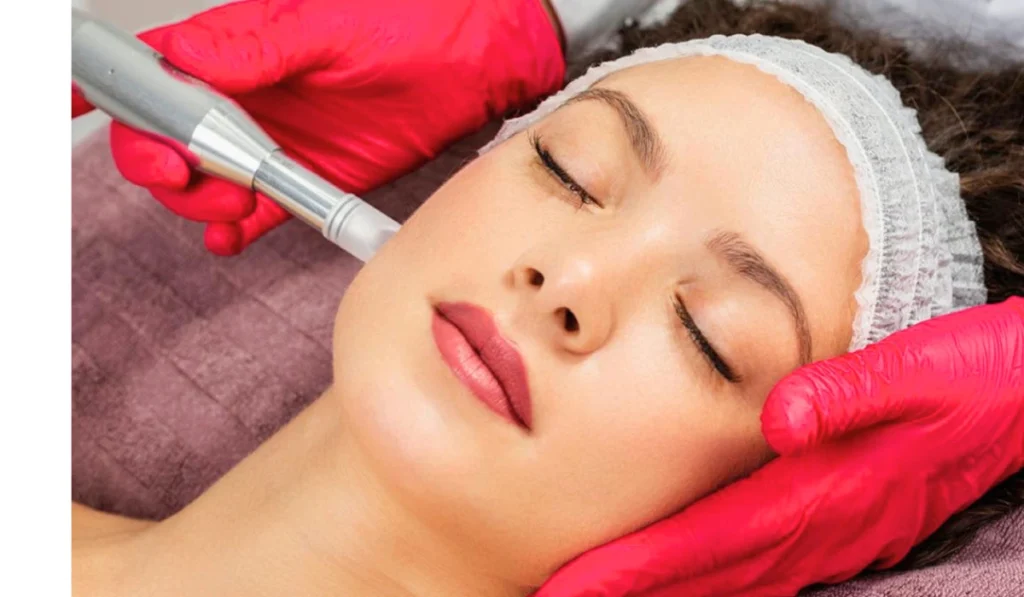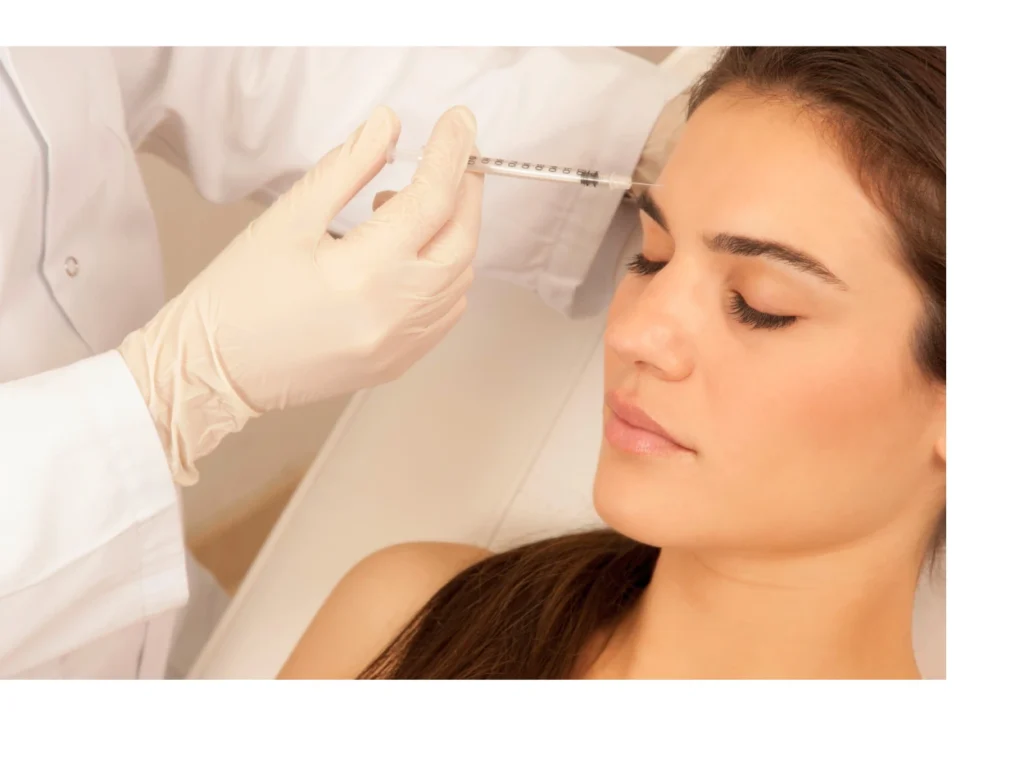Microneedling is a popular skin treatment. It involves tiny needles to rejuvenate the skin.
So, how long does microneedling take? The procedure usually lasts about 30 to 60 minutes. Microneedling has gained attention for its potential to improve skin texture, reduce scars, and boost collagen. The duration of the treatment can vary based on the area treated and the individual’s needs.
Understanding the time commitment helps in planning and setting realistic expectations. This introduction will guide you through the factors affecting the length of a microneedling session. You’ll learn what to expect during your appointment, making the process clearer and less daunting. Ready to find out more? Let’s dive in!

Credit: paleomg.com
Introduction To Microneedling
Microneedling is a popular skincare treatment. It helps improve the appearance of your skin. This procedure can address various skin concerns. Let’s dive into what microneedling is and its benefits.
What Is Microneedling?
Microneedling involves using tiny needles. These needles create small punctures in the skin. This process stimulates collagen production. Collagen is vital for skin elasticity and firmness.
The procedure is usually done with a device called a dermaroller. The dermaroller has fine needles that penetrate the skin. These controlled injuries trigger the skin’s repair process.
Microneedling can be done on different parts of the body. The most common area is the face. Other areas include the neck, hands, and abdomen.
Benefits Of Microneedling
Microneedling offers several benefits. Here are some of the key advantages:
- Reduces Fine Lines and Wrinkles: Boosts collagen to smooth out lines.
- Improves Skin Texture: Helps make skin feel smoother and softer.
- Reduces Acne Scars: Minimizes the appearance of old acne scars.
- Enhances Skin Tone: Helps reduce hyperpigmentation and dark spots.
- Minimizes Pore Size: Makes pores appear smaller and less noticeable.
These benefits make microneedling a sought-after treatment. People looking to improve their skin often choose it. The results can be seen after just a few sessions.
Initial Consultation
The initial consultation is a crucial step before starting your microneedling journey. During this session, the dermatologist or skincare specialist will assess your skin, discuss your goals, and create a tailored treatment plan. Let’s delve deeper into what happens during this important phase.
Assessment Of Skin
The first step in the initial consultation is the assessment of your skin. The specialist will examine your skin type, texture, and specific concerns. They might use a magnifying lamp or other tools to get a closer look at your skin’s condition.
Factors such as acne scars, fine lines, hyperpigmentation, and overall skin health will be evaluated. This helps in determining how well your skin can respond to microneedling. This thorough assessment ensures the treatment is safe and effective for your skin type.
Setting Treatment Goals
After assessing your skin, the next step is setting treatment goals. The specialist will discuss your skincare objectives and what you hope to achieve with microneedling.
Common goals include improving skin texture, reducing scars, and minimizing fine lines. The specialist will provide realistic expectations about what microneedling can achieve. They will also discuss the number of sessions required and the expected timeline for results.
Here is a simple table outlining common treatment goals and expected outcomes:
| Goal | Expected Outcome | Number of Sessions |
|---|---|---|
| Reduce Acne Scars | Smoother Skin Texture | 3-6 sessions |
| Minimize Fine Lines | Less Visible Wrinkles | 4-8 sessions |
| Improve Skin Tone | More Even Complexion | 2-5 sessions |
Setting clear goals helps in tracking your progress and adjusting the treatment plan if needed. It ensures that both you and your specialist are aligned on the desired outcomes.
Preparation Time
Microneedling is a popular skincare treatment that boosts collagen and improves skin texture. Understanding the preparation time can help you plan better and achieve optimal results.
Pre-treatment Instructions
Preparation begins a few days before your microneedling session. Follow these pre-treatment instructions for the best outcome:
- Avoid sun exposure and tanning for at least 24 hours before the treatment.
- Do not use retinoids or other harsh skincare products for 48 hours prior.
- Stay hydrated by drinking plenty of water.
- Inform your practitioner about any medications you are taking.
- Refrain from waxing or using depilatory creams on the treatment area.
Numbing Cream Application
The numbing cream application is a crucial step in preparation. It ensures comfort during the microneedling procedure.
- Arrive at the clinic 30-45 minutes before the scheduled time.
- The practitioner will cleanse your skin to remove any makeup or oils.
- A numbing cream is then applied evenly over the treatment area.
- You will wait for about 20-30 minutes to allow the cream to take effect.
During this waiting period, you can relax and prepare mentally for the procedure.

Credit: www.healthline.com
Procedure Duration
Understanding the duration of a microneedling procedure is important for planning your session. The time it takes can vary depending on the area being treated. Let’s explore how long microneedling takes for the face and body.
Face Treatment
A typical microneedling session for the face lasts about 30 minutes. This includes time for numbing cream to take effect. The actual needling process usually takes 15-20 minutes. A trained technician will move the microneedling device over your face. They will cover areas like the forehead, cheeks, and chin. You might feel a slight tingling sensation. After the treatment, a soothing serum is often applied.
Body Treatment
Microneedling treatments for the body can take longer. The duration depends on the size of the area being treated. Smaller areas, like the neck or hands, may take about 30 minutes. Larger areas, like the back or thighs, can take up to 60 minutes. The steps are similar to facial treatments. First, numbing cream is applied. Then, the technician uses the microneedling device. They will cover the entire area, ensuring even treatment. Afterward, a soothing cream or serum is applied to help with recovery.
Post-treatment Care
After undergoing microneedling, your skin needs proper care. This ensures the best results and minimizes any side effects. Post-treatment care involves both immediate aftercare and long-term care. Each of these steps plays a crucial role in the healing process.
Immediate Aftercare
Right after your microneedling session, your skin will be sensitive. It is normal to experience redness, swelling, and slight discomfort. To manage this, follow these steps:
- Keep your skin clean: Use a gentle cleanser and avoid harsh chemicals.
- Hydrate: Apply a hydrating serum or moisturizer to soothe your skin.
- Avoid sun exposure: Use a broad-spectrum sunscreen with SPF 30 or higher.
- Do not touch your face: This prevents infection and irritation.
- Skip makeup: Allow your skin to breathe and recover.
These actions help in reducing inflammation and speeding up the healing process. Proper immediate aftercare is essential for a smooth recovery.
Long-term Care
Long-term care is equally important for maintaining the benefits of microneedling. Here are some tips:
- Continue using sunscreen: Protect your skin from UV damage.
- Hydrate regularly: Keep your skin moisturized to maintain its health.
- Use gentle skincare products: Avoid products with alcohol, retinol, or strong acids.
- Schedule follow-up treatments: Consult your dermatologist for maintenance sessions.
- Stay hydrated: Drink plenty of water to support skin health.
By following these long-term care tips, you will enjoy the full benefits of microneedling. Your skin will appear more youthful, radiant, and healthy.
| Immediate Aftercare | Long-Term Care |
|---|---|
| Use gentle cleanser | Continue using sunscreen |
| Apply hydrating serum | Keep skin moisturized |
| Avoid sun exposure | Use gentle skincare products |
| Do not touch face | Schedule follow-up treatments |
| Skip makeup | Stay hydrated |
Following both immediate and long-term care steps ensures your skin heals properly and stays healthy. Microneedling can be a great way to rejuvenate your skin, but proper care is key.
Recovery Time
Microneedling is a popular skin treatment with minimal downtime. Understanding the recovery time can help you plan better. This section will guide you through the healing process and the expected downtime after microneedling.
Healing Process
The healing process begins immediately after the treatment. You may notice some redness and swelling. This is normal and usually subsides within 24-48 hours. Your skin may feel tight and sensitive to touch.
During the first few days, your skin will start to peel. This is a sign that new skin cells are forming. Keep your skin moisturized to aid this process. Avoid sun exposure and use a high SPF sunscreen if you need to go outside.
By the end of the first week, most of the redness and swelling should be gone. Your skin will look and feel smoother.
Expected Downtime
The expected downtime for microneedling is minimal. You can usually return to your normal activities within 24-48 hours. Some people may experience redness for a few days longer. This varies depending on your skin type and the depth of the needles used.
Here is a simple breakdown of the expected downtime:
| Day | Symptoms |
|---|---|
| Day 1 | Redness, swelling, tight skin |
| Day 2-3 | Peeling, reduced redness |
| Day 4-7 | Minimal redness, smooth skin |
Most people feel comfortable resuming normal activities after two days. To speed up recovery, follow your aftercare instructions carefully. Drink plenty of water and avoid harsh skincare products.
Microneedling offers a quick recovery time with noticeable results. With proper care, your skin will look rejuvenated and refreshed in no time.
Factors Affecting Duration
Microneedling is a popular skin treatment. The duration of a microneedling session varies. Several factors affect how long it takes. Let’s look at the main factors that influence the duration of microneedling.
Skin Condition
Your skin condition plays a vital role. If you have minor issues, the session might be shorter. For severe conditions, it might take longer. Some common skin issues include:
- Acne scars
- Wrinkles
- Stretch marks
- Uneven skin tone
Healthier skin often needs less time. Damaged skin might need more care. This can increase the duration of your session.
Treatment Area
The treatment area also affects the duration. Smaller areas take less time. Larger areas need more time. Here is a table to give you an idea:
| Area | Approximate Time |
|---|---|
| Face | 30-45 minutes |
| Neck | 20-30 minutes |
| Hands | 15-25 minutes |
| Stomach | 45-60 minutes |
As you can see, the size of the area matters. Smaller areas like hands take less time. Larger areas like the stomach take more time. This helps to plan your session better.
Final Thoughts
Microneedling is a popular skincare treatment offering many benefits. Whether you seek smoother skin, reduced wrinkles, or improved texture, understanding the timing is essential. Let’s delve into the time involved and when to expect results.
Summary Of Time Involved
The microneedling process consists of several steps. Here is a breakdown:
| Step | Time Required |
|---|---|
| Consultation | 15-30 minutes |
| Procedure | 30-60 minutes |
| Recovery | 2-3 days of mild redness |
Typically, the entire process takes about an hour. This includes preparation, treatment, and post-care instructions. Recovery might extend the total time slightly. Redness usually subsides within a few days.
When To Expect Results
Patience is key. The initial results might be visible within a week. However, full results typically appear after several weeks. Here is a general timeline:
- 1 Week: Initial improvements in skin texture
- 2-4 Weeks: Reduced fine lines and wrinkles
- 4-6 Weeks: Enhanced overall skin appearance
For optimal results, multiple sessions are often recommended. A common schedule includes 3-6 treatments, spaced 4-6 weeks apart. This ensures the skin has ample time to heal and regenerate.
In summary, microneedling requires a modest time investment but offers lasting benefits. Understanding the timeline can help set realistic expectations. Enjoy the journey to healthier, smoother skin!

Credit: www.beverlyhillsmedspa.com
Frequently Asked Questions
How Long Is A Microneedling Session?
A typical microneedling session lasts about 30 to 60 minutes. The duration depends on the treatment area. Your practitioner will provide specific details based on your needs.
How Many Microneedling Sessions Are Needed?
Most people need 3 to 6 sessions for optimal results. The number of sessions depends on your skin concerns. Consult with your practitioner for a personalized treatment plan.
What Is The Recovery Time After Microneedling?
Recovery time is usually 24 to 72 hours. Your skin may appear red and feel sensitive during this period. Follow post-care instructions for best results.
How Soon Do You See Microneedling Results?
You may see initial results within a week. Full results typically appear after multiple sessions. Collagen production and skin improvement continue over several months.
Conclusion
Microneedling offers many benefits for your skin. The process usually takes around an hour. Results can be noticeable after a few sessions. It is a popular choice for smoother, healthier skin. Always consult with a professional before starting treatments. They can guide you on what to expect.
Ready to give your skin the care it needs? Microneedling might be your answer. Make sure to follow all aftercare instructions for the best outcome. Your skin deserves it.

